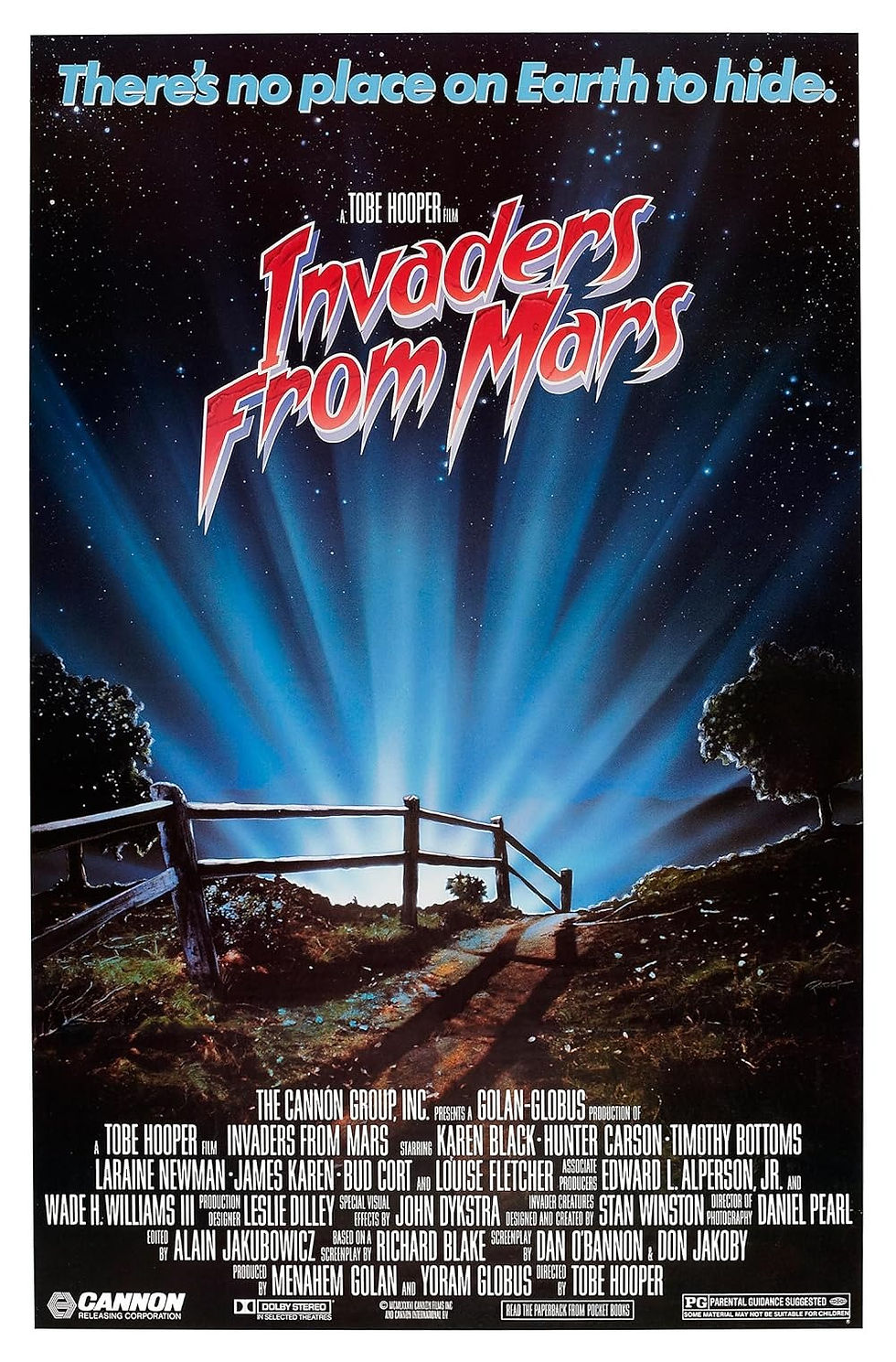Tobe Hooper: Gritty Master of American Horror
- Allan Major

- May 13, 2024
- 2 min read

Tobe Hooper wasn't a mere filmmaker; he was an architect of cinematic dread, a poet of decay who ripped the veneer of safety off the American Dream to expose the rotting underbelly. His films are relentless, raw, and fueled by a nightmarish energy. "The Texas Chain Saw Massacre" stands as his masterpiece, a horror landmark that blurred the line between fiction and a snuff film's terrifying verisimilitude.
Assault on the Senses: Hooper's Tools of Terror
Hooper's horror wasn't crafted with elegance, but with a visceral, almost painful intensity. The relentless whine of the chainsaw in "Massacre" is an aural assault. His disorienting, hand-held camerawork throws viewers into the chaos. His films dripped with sweat, blood, and a sense of unrelenting Texas heat, transforming the environment itself into a character within the horror.

Horror Born from Societal Decay
Beneath the grime and relentless attacks, Hooper's films pulsed with a dark social commentary. "The Texas Chain Saw Massacre" mirrored the disillusionment with a curdling American Dream, its monstrous Sawyer clan a horrifying reflection of societal collapse pushed to extremes. Even in lighter fare, like the black-comedy excess of "Texas Chainsaw Massacre 2," a satirical, yet disturbing, undercurrent remained.
Beyond Leatherface: An Uncompromising Vision
Hooper never confined himself to a single horror trope. The Southern Gothic fever dream of "Eaten Alive," the small-town vampiric terror of "Salem's Lot" – His work was unpredictable, uncompromising, always infused with his unique blend of disturbing imagery and a darkly sardonic worldview.

Legacy: Inspiration for Horror's Grittiest Voices
Tobe Hooper's impact on the genre is profound. Without his relentless, grimy vision, "found footage", torture-focused horror, and the gritty exploitation wave of the 70s and 80s might never have flourished. He forced audiences to confront the ugly, the chaotic, reminding us that terror can lurk beneath the most mundane, sun-baked surfaces.
Conclusion
Hooper didn't aim to please. His films are brutal, often messy, sometimes even bordering on tasteless. Yet, in his unflinching portrayal of the grotesque and the relentless bleakness he found within seemingly ordinary settings, he became a cinematic visionary. His works are seared onto the horror landscape, a constant reminder that the most potent terror might not be supernatural, but the darkness lurking within our own mundane world.





